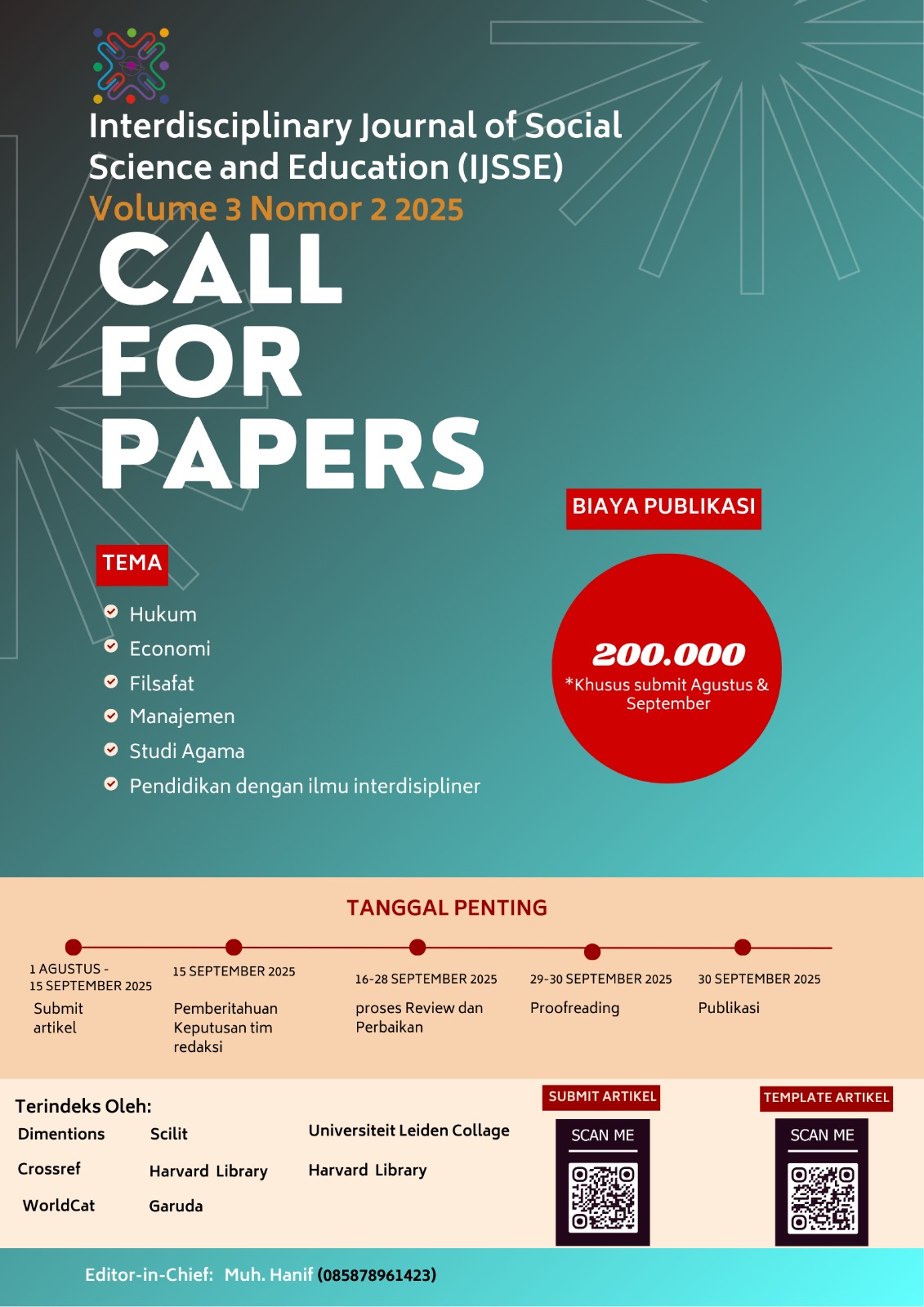Deliberative Democracy: Affirmative Action Policy on the 30% Quota for Women in Parliament
DOI:
https://doi.org/10.53639/ijsse.v1i1.15Keywords:
Affirmative Action, Deliberative Democracy, RepresentationAbstract
This paper aims to determine the process of deliberative democracy in the use of affirmative action 30% quota for women as a starting point in increasing women's representation in parliament. This is because in gender equality in politics in Indonesia there is a large gap between the representation of women and men even after the policy is enacted. Through deliberative democracy, increasing women's representation can use policies made through discursive means in civil society. The method in this paper is a descriptive qualitative method using the author's analysis of book reviews and research with related themes. The results of this paper study the ratification of affirmative action policies in 2023 through various kinds of dialogue and rejection. Arguments for rejection include (1) equality is considered an individual quality, not a quota, (2) quotas are considered an obstacle, (3) psychological constraints on women, (4) gender construction against women. The rejection argument makes the affirmative action policy a massive debate in the public sphere which becomes the aspiration of women activists to fight for in the political system. Habermas' view states that a legal product will gain strong legitimacy if in the process of making it through debate and discussion in the public sphere.
Downloads
References
Asshiddiqie, Jimli. 2008. Menuju Negara Hukum yang Demokratis. Jakarta: Sekretariat Jenderal dan Kepaniteraan Mahkamah Konstitusi.
Bacchi, Carol Lee. 1996. The Politics of Affirmative Action: Women Equality and Category Politics. London: Sage Publication.
Chappell, Zsuzsanna. 2011. Justifying Deliberative Democracy: are Two Heads always Wiser than One? Dalam Contemporary Political Theory. Vol. 1. No. 1. Macmillan Publisher.
Fatkhurrohman. 2011. Mengukur Kesamaan Paham Demokrasi Deliberatif, Demokrasi Pacasila, dan Demokrasi Konstitusional. Jurnal Konstitusional. Vol. IV. No. 2. Malang: Universitas Widyagama.
Habermas, Jurgen. 2004. Krisis Legitimasi. Yogyakarta: Kalam.
Haliim, Wimmy. 2016. Demokrasi Deliberatif Indonesia: Konsep Partisipasi Masyarakat dalam Membuat Demorkasi dan Hukum Responsif. Jurnal Masyarakat Indonesia. Vol. 4. No. 1. Malang: Universitas Brawijaya.
Indratno, Imam, dkk. Kajian Literatur Demkrasi Partisipatif. Bandung: Universitas Islam Bandung.
Iskandar, Hadi. 2011. Demokrasi Deliberatif dan Ruang Publik Politis. Jurnal Nanggroe. Vol. 4. No. 3. Aceh: Universitas Malikussaleh.
Karam, Azzam. 1999. Perempuan di Parlemen: Bukan Sekedar Jumlah, Bukan Sekedar Hiasan. Jakarta: Penerbit Yayasan Jurnal Perempuan.
Muqoddas, Moh. Busyro, dkk. 1992. Politik Pembangunan Hukum Indonesia. Yogyakarta: UII Press.
Nugraha, Rahardian Prima. 2014. Konstitusionalitas Penyelenggaraan Pemilukada di Daerah Otonomi Khusus (Kajian Demokrasi Deliberatif di Daerah Otonomi Khusus Papua). Tesis. Depok: FH UI.
Poerba, Chris. 2014. Habermas dan Demokrasi Deliberatif: Refeleksid dan Praktik. Jakarta: Sinalsal Institut dan Persada Raharja Nugraha.
Sihite, Irma Latifah. 2011. Penerapan Affirmative Action sebagai Upaya Peningkatan Keterwakilan Perempuan dalam Palemen Indonesia. Tesis. Depok: FH UI
Soetjipto, Ani Widyani. 2005. Politik Perempuan Bukan Gerhana. Jakarta: PT Kompas Media Nusantara.
Downloads
Published
How to Cite
Issue
Section
License
Copyright (c) 2023 Siti Muslikhatul Ummah

This work is licensed under a Creative Commons Attribution-ShareAlike 4.0 International License.
Authors who publish with this journal agree to the following terms:
- Authors retain copyright and grant the journal right of first publication with the work simultaneously licensed under a Creative Commons Attribution License that allows others to share the work with an acknowledgement of the work's authorship and initial publication in this journal.
- Authors are able to enter into separate, additional contractual arrangements for the non-exclusive distribution of the journal's published version of the work (e.g., post it to an institutional repository or publish it in a book), with an acknowledgement of its initial publication in this journal.
- Authors are permitted and encouraged to post their work online (e.g., in institutional repositories or on their website) prior to and during the submission process, as it can lead to productive exchanges, as well as earlier and greater citation of published work (See The Effect of Open Access).


















